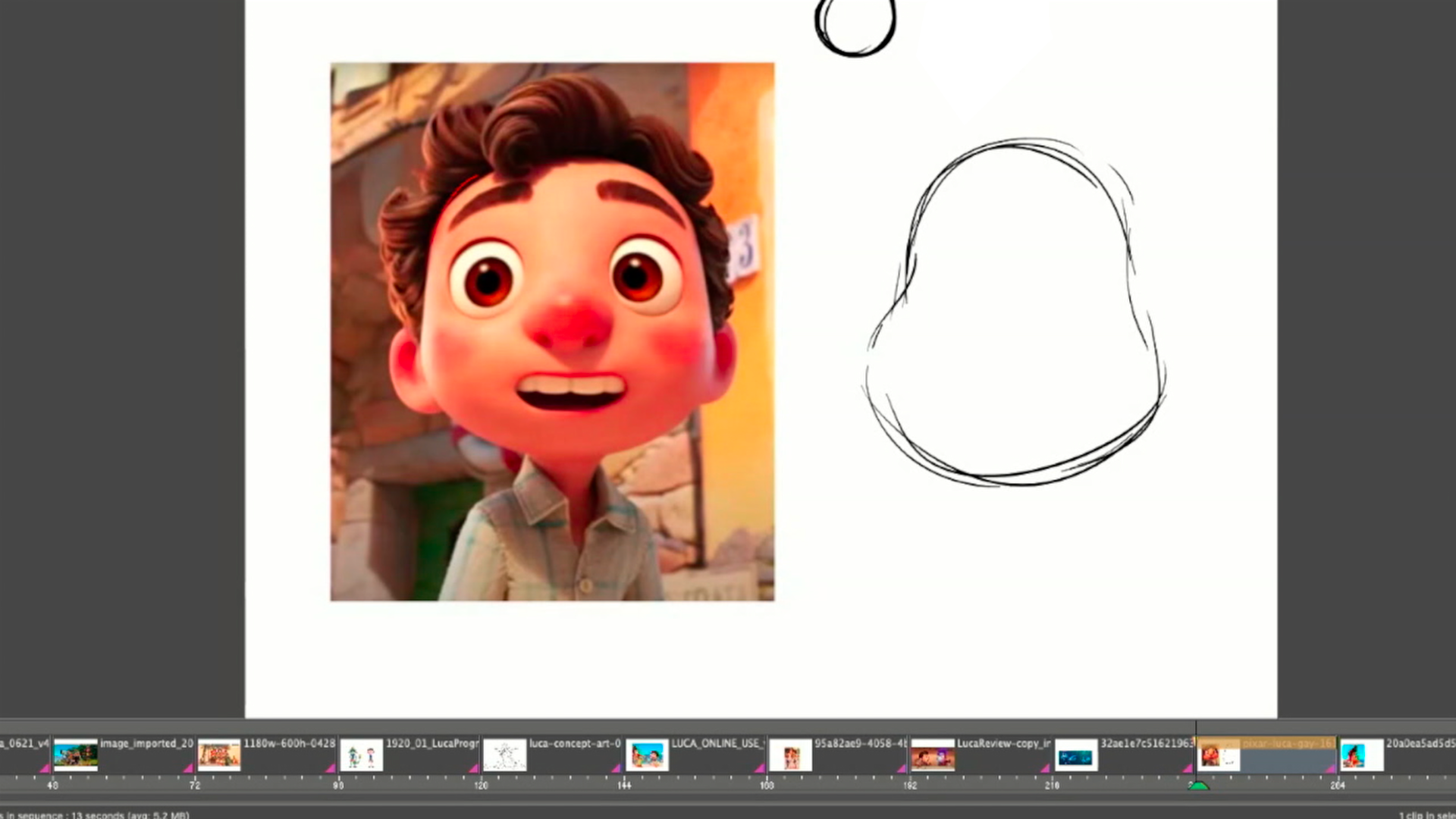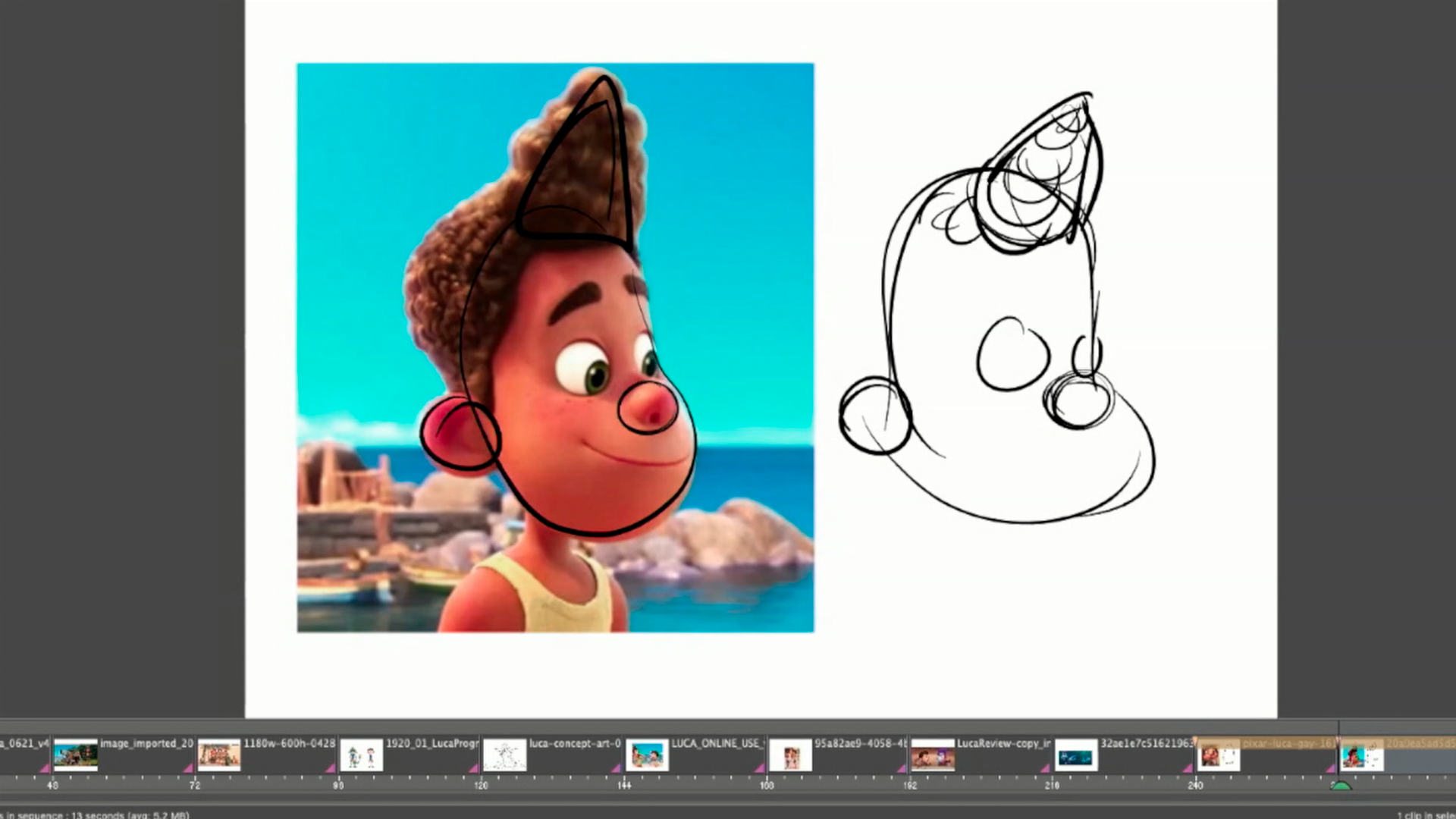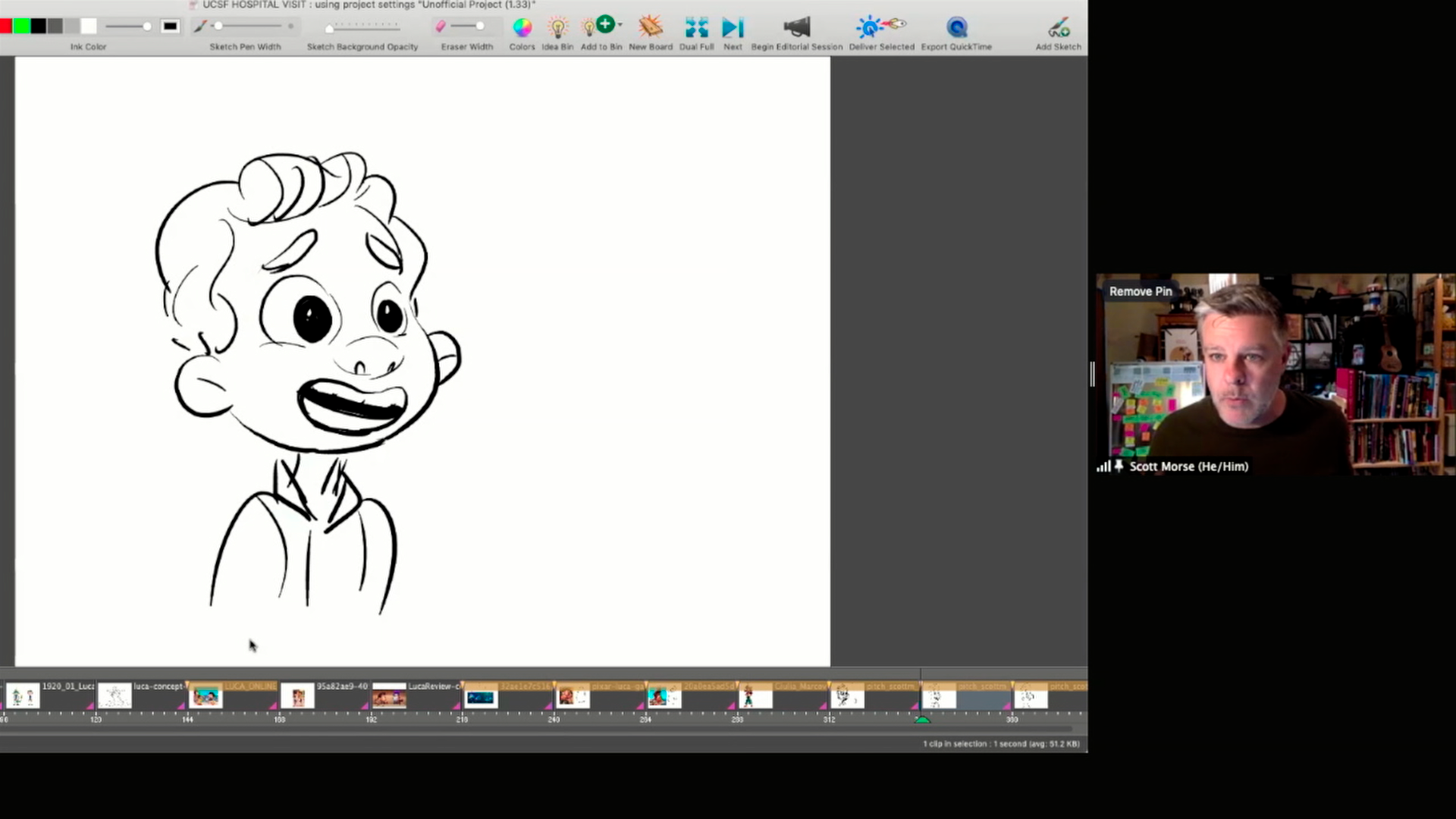Pixar's Scott Morse visits Benioff Children’s Hospital
Pixar Art Department's Scott Morse spent some time with us in July. When Pixar releases a new movie, like Luca, they visit many of the children’s hospitals around the country. It is always a fun time.
Kristen presenting Scott Morse
These days, all of our visits happen virtually. Some of the community visits happen for a group of patients over Zoom. And some of the visits are presented on our Child Life's internal TV channel, Kaleidoscope.
Scott really inspired us by showing us the process of making our drawings "really good." To summarize the process, I remember it as:
1. sketch - explore - make a lot of mistakes - use photos as a reference
2. Use the sketch as a reference. Make a lot of decisions about how you want things to look. Keeping the things you like and discard the things you don't like so much.
3. Use your “decision” drawing as a reference. Begin redrawing and refine things in a way that makes you proud. So proud that you want to share your art.
If you ever thought that the characters in a Pixar movie seem genuine, it might be because the stories and experiences in a Pixar movie kinda start from real-life experiences. It is interesting that Pixar characters, like talking cars, seem like people or how toys come alive when we leave the room, and even sea creatures like the ones in Luca have a sense of humanity that is easy for us (the audience) to pick up on. As Scott was sharing the process of refining a character, I got the sense that the artists at Pixar put a lot of effort into making their drawings true to life. I mean, it is easy to accept a Pixar character's emotion and thematic experience. I think Pixar characters are relevant and relatable.
Scott showed us how the characters in Luca are made of simple shapes. At first, when looking at the completed character, simple shapes aren’t that apparent. But when you take the time to pause and examine a character, you may see something. For example, Luca's head is somewhat like a jellybean. Scott described that the main characters are made up of circles and shapes that have been squished a little bit. Like if you held a circle in with your fingers and you squished the circle a little bit. You don't just get an oval; you can get interesting shapes, like jellybeans. Circles aren't the only shapes. What do you notice when you examine the character, Julia?
Scott used his time with us to show how we can draw Luca. He encouraged us all to draw and go ahead and make mistakes because that is how we explore; it's how we learn. Having an image as a reference is also a good idea. Scott encouraged us that it is also ok to look at other pictures so you can visualize what you want to draw. He let us know that it is also ok if it doesn't look perfect. When you start sketching, the goal is not perfection. While Scott was drawing Luca's hair, he said, see, it's not perfect; “none of our hair looks perfect all the time.”
Scott was talking about the storyboard process and how the goal is not to make perfect drawings. Artists are mainly focused on the feeling their sketches communicate. He said the whole process is kinda like a book report where you first write your rough draft, then you edit it, refine it, then you write your final version.
This "first draft" drawing of Luca that Scott drew, became a reference for a more refined version. Scott was using his computer to draw; he added a blank layer on top of his sketch. When you draw on paper instead of a computer, use tracing paper and place it over your sketch. The sketch below this new layer/tracing paper is faint, Scott is focused on just the lines that he wants to keep. While he is drawing, he wants to make the new drawing cleaner. You can repeat the process and make an even more refined, maybe even more detailed version.
Scott encouraged the patients to hold on to their youth, saying as you get older, the whole idea is to remove your age in your art. He wanted us all to remember how important it is to keep discovering and having fun. Hmmm, or was it "to have fun discovering" ?
Anyway, he talked about how he likes to make expressions with his face as he draws. Hahaha, his family and friends think he is just making funny faces. He would look into a mirror and examine his face, his animated expressions. Looking at his own face asking himself things like -- should I lower my eyebrows or should I get them big -- should I raise an eye -- what happens to my cheek when I make shapes with my mouth... Scott described this as play-acting, keyword, PLAY. I got the sense that Pixar artists get really animated when they are drawing characters. When creating a scene, Scott says that it's ok to play, play through a scene (imagining the scene).
He reminds us to keep having fun doing whatever we are doing. Sometimes Scott likes to think about toys like action figures and how he would position them to play through the movie scene they are creating. He says, "Toys are important stuff."






